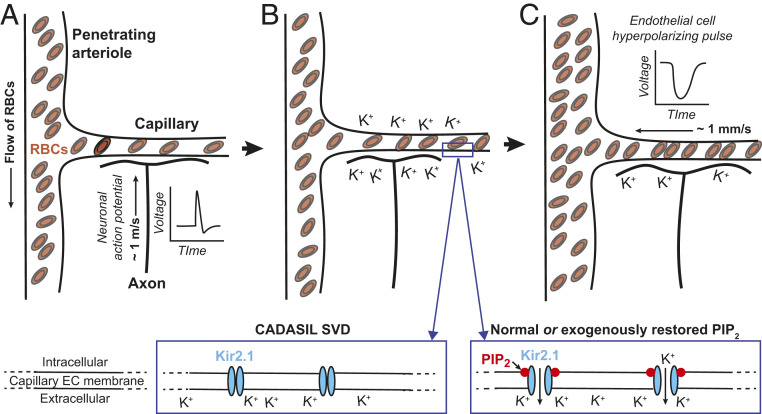Fig. 1.
The initial signaling events in functional hyperemia. (A and B) Neuronal action potentials induce hyperpolarizing pulses in capillary endothelial cells via buildup of extracellular [K+] to open Kir2.1 channels. Opening of these channels further requires binding of PIP2. (C) Hyperpolarizing pulses in capillary endothelial cells (ECs), caused by K+ flux through the opened Kir2.1 channels, are electrically conducted to upstream penetrating arterioles and induce dilation of the penetrating arterioles by relaxation of the associated smooth muscle. This leads to an elevated pressure head on the capillary network and an increase in red blood cell (RBC) flux. (Inset) Loss of PIP2 in the CADASIL small vessel disease (SVD) model prevents the opening of Kir2.1 channels and blocks functional hyperemia, while normal or restored levels of PIP2 support opening of Kir2.1 and a normal hemodynamic response.

